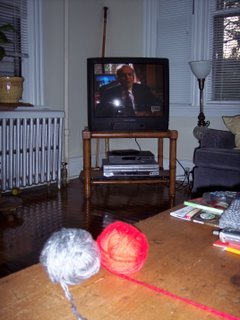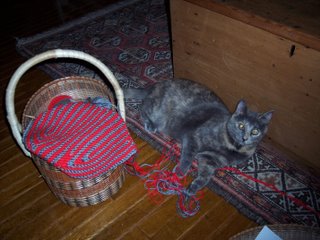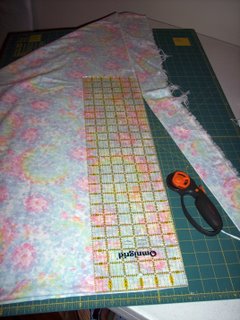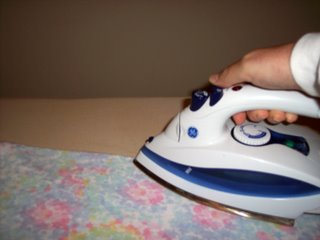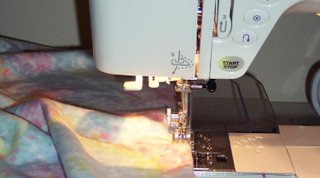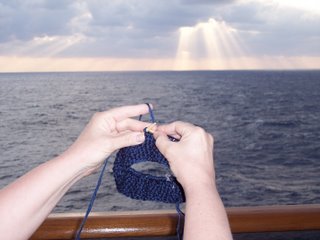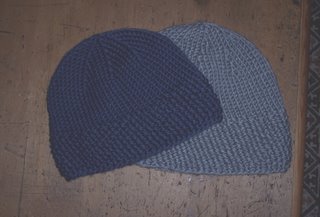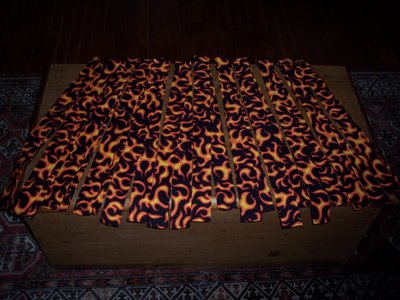
Ever hear of cool ties? I discovered them a few years ago through The Ships Project. They're narrow cotton neck bands with sewn-in pockets containing tiny water-absorbing crystals. The ties are extremely popular with the ground troops the project supports. You soak them in water, and the crystals puff up and stay that way for hours. The slow evaporation creates a micro-cooling system when tied around the neck. Now, I can't imagine anything making the Iraqui desert a comfortable place to be...but if these cool ties can give even a bit of momentary relief, they're well worth doing.
You'll find some first-hand comments about these cool ties on The Ship's Project Web site -- and the photos showing troops with the project's knitted caps, are wonderful, too.
The project sends hats to the ships year-round, but really kicks up the shipments of cool ties for the ground troops this time of year. The ties I finished today are pictured above - in the fabric with that flame motif, that I really don't get at all (does it have something to do with Harleys? NASCAR?) -- but at least it does look quite guy-like, and was more fun to work with than the drab tans and grays I've done in the past. A yard and a half of fabric is enough for a full dozen ties. The Watersorb brand of crystals are available online - I got a similiar product yesterday in the plant department of Home Depot.
Here's the cool tie pattern - very simple and easy to follow.
As for the hats that will go off to the project this week, here they are - two modified Tychus caps (oh, how I love that pattern) and a third from my "mistake" pattern for caps with a seed-stitch cuff.

I've got another Tychus on the needles right now - so, think I'll get to it and see if I can stay awake for "Grey's Anatomy" tonight!


 It's fun to stretch and try new, challenging patterns, but it's often great to fall back on the familiar, easy projects, too -- especially when surrounded by laughter, conversation and late-night pizza. I'm glad these service projects could be part of a memorable quilting weekend.
It's fun to stretch and try new, challenging patterns, but it's often great to fall back on the familiar, easy projects, too -- especially when surrounded by laughter, conversation and late-night pizza. I'm glad these service projects could be part of a memorable quilting weekend.


